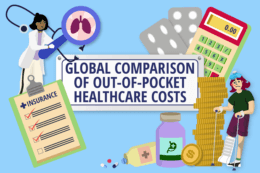Pet owners have been warned not to let their festive feast turn into a dog’s breakfast, with new research from Compare the Market revealing one-in-five pet owners could unwittingly expose their animals to toxic Christmas treats.
We took a deep dive into how home ownership has grown worldwide to identify the best countries to buy a new home. Read on to find out who tops our 2025 index.
Our global renewables performance index assesses countries around the world for how effective their use of renewable energy is. Read on to discover which countries lead the way in 2025.
18 Dec 2025 14:30
We took a deep dive into how home ownership has grown worldwide to identify the best countries to buy a new home. Read on to find out who tops our 2025 index.
18 Dec 2025 14:00
Our global renewables performance index assesses countries around the world for how effective their use of renewable energy is. Read on to discover which countries lead the way in 2025.
18 Dec 2025 11:02
Getting on the property ladder can be challenging. Discover which countries offer the best affordability, market stability, and more, for first-time buyers.
15 Dec 2025 15:52
Find out which regions in the US and Australia facing the highest risk of costly home maintenance.
10 Dec 2025 11:43
Uncover the true cost of Christmas lights in 2025 with our global analysis, revealing the most and least affordable places to light up the festive season.
8 Dec 2025 14:55
Which countries are best positioned to reduce vaping? Compare the Market dove into the data to find out.
8 Dec 2025 14:32
Which cities have to wait the longest for emergency treatment? Our infrastructure index compares wait times at ERs worldwide. Read on to see what we found.
5 Dec 2025 10:44
Where is the best place in the world to live as a single woman?
4 Dec 2025 14:23
Some countries use publicly funded healthcare, others require patients to pay huge amounts, but which countries have the highest out-of-pocket health costs? We found out.
4 Dec 2025 11:08
Access to affordable social infrastructure is crucial for maintaining good health. We’ve ranked the cities with the best access to these services worldwide.












